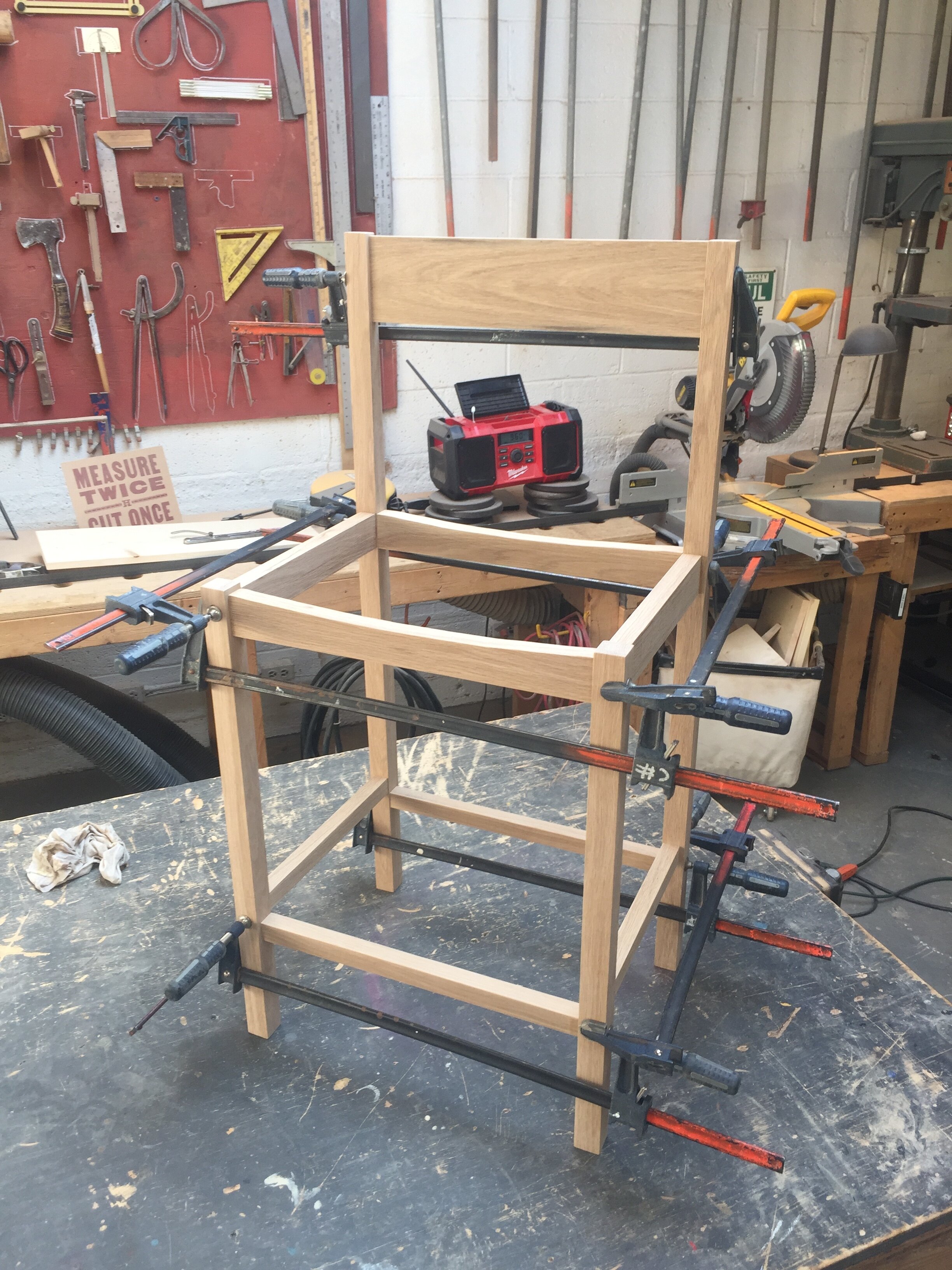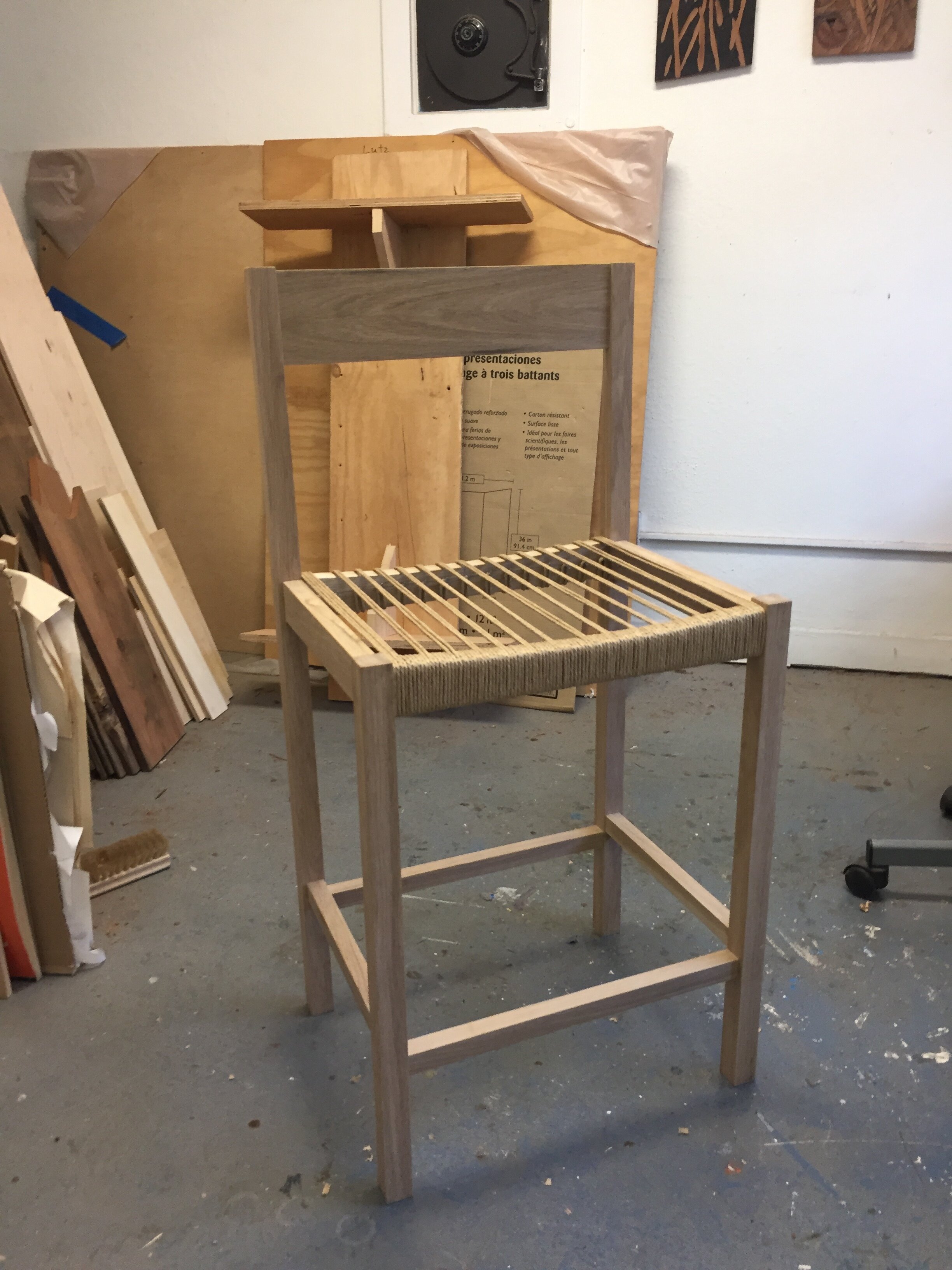A REASON TO WEAVE
I was recently asked to commission a large walnut bed for clients who live out of state. In addition to the challenges of designing something attractive, comfortable and durable, there was another challenge of how we would ship something so large and heavy as efficiently as possible. One thought was to make the headboards out of danish cord rather than as a solid veneered material. The only hiccup here was that I had not previously weaved danish cord, so I promised the client that I would give it a whirl; if they liked it, great, if not, we would make a veneered headboard.
Elevation and Section of walnut bed concept with danish cord headboard.
FIGURING IT OUT
Even though as an admirer of mid-century danish furniture and the chairs of Hans Wegner, I was familiar with danish cord, and had seen other woodworkers who I follow on IG execute it, I had never done it myself. Of course it looked easy, but I had enough experience to know that (particularly) if it looked easy, it was probably going to be mind-shatteringly, soul-crushingly, life-wreckingly (thats a word right?) difficult. More plainly, nothing is as easy it looks, and inevitably there would mistakes and trouble shooting. But even though the Krenov acolytes were weaving seats up in Fort Bragg, danish cord still seemed somewhat obscure in modern American times, so where would I find resources to learn something so seemingly obscure? Well, living in the East Bay, the seemingly-obscure-craft-education capital of world, paid off again. I was pleasantly surprised to learn that the guy that wrote the book on weaving and caning (literally wrote a book) opened one of the few stores on the whole continent that is solely dedicated to weaving and caning called The Caning Shop and it was right in the neighborhood, because, well… Berkeley. I visited Jim, asked a few questions, bought his book and some supplies, and he shoved me off in the right direction.
WEAVING
To test the weaving I could have made a simple frame using mortise and tenon joinery, but I thought, why not add some legs to the frame and make a stool? I grabbed some white Oak, sized the wood, glued it up and had a seat frame to try my weaving on. At first glance of most danish cord chairs, I would always assume that the cord simply wraps around the frame. The first thing I learned is that all traditional Danish cord uses tacks to secure the start of the cord and “L” shaped nails secured to the inside of the chairs rails as hooks to secure the cord as you are weaving the seat. (I did find an article at Fine Woodworking where the maker used knots instead of nails) One of the other things that I learned is that there are two kinds of cord to consider - laced and unlaced. Laced cord has a uniform-like spiral texture that reads quite strongly, while unlaced cord is untwisted and leads to a final product that reads as more of a smooth surface. I opted for unlaced cord for my seat. After you place your nails, your cord your chair first, from front rail to back. This is setting up a field of cords to weave in and out of from side rail to side rail. After I set up the cords, then I just weaved it real fast. Kidding, I think this first chair took me about a day, everything considered.
White oak stool frame in waiting for a danish cord seat.
After you set your “L” shaped nails, you set up your cords from front to back rail. You will weave side to side, or perpendicular to these cords.
Top view of the side to side weave.
THE RESULT
The result was an elegant, light, warm and comfortable surface whose materiality contrasted nicely with the white oak. When presented with the stool, others assumed that the seat was very difficult or complex to weave. But somewhere along the way, I realized that there was this very naturally human aspect to weaving, as if it was embedded into a collective genome somehow; all of our ancestors wove, so it was just there and you just had to start doing it. Rather sentimental I know, but a nice thought nonetheless. Ultimately, danish cord is strong, durable, warm, comfortable, humble and pragmatic. It is thus a representation of craft at its highest realization - a simple, beautiful solution to the most mundane of problems, in this case, sitting down. I look forward to weaving the headboard if my clients choose to go that route, and regardless of their decision, weaving more seats along the way.





